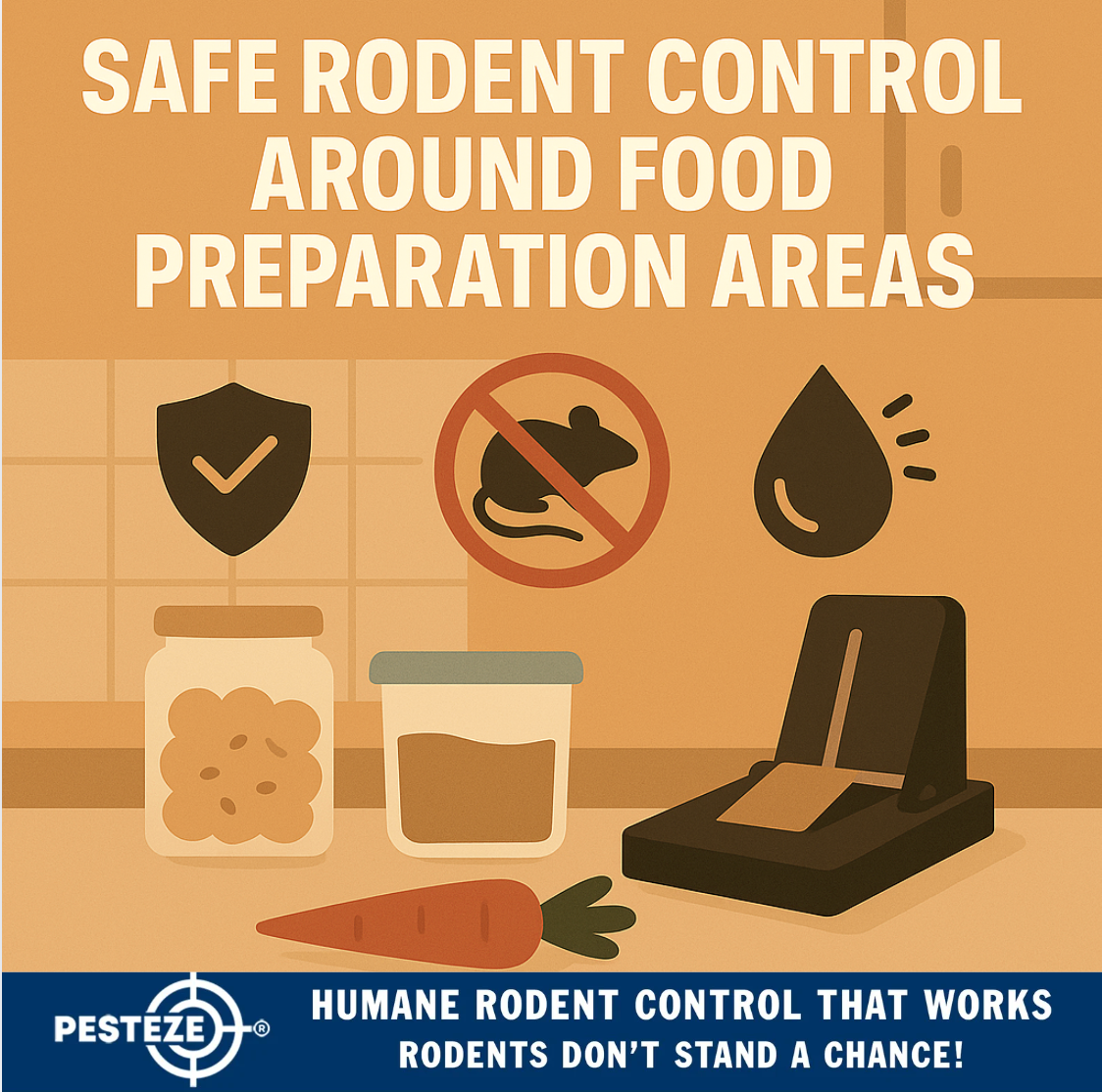SAFE RODENT CONTROL AROUND FOOD PREPARATION AREAS

SAFE RODENT CONTROL AROUND FOOD PREPARATION AREAS
SUMMARY
Food preparation areas are highly vulnerable to rodent contamination. This guide explains safe and effective strategies to keep rodents out without compromising food safety.
FEATURES
-
Seal Entry Points: Block cracks and gaps near kitchens.
-
Proper Food Storage: Use airtight containers for all ingredients.
-
Sanitation Practices: Clean surfaces, spills, and crumbs immediately.
-
Non-Toxic Deterrents: Use natural repellents safe for kitchens.
-
Safe Trap Placement: Position traps away from food contact zones.
-
Professional Oversight: Hire experts for compliant solutions.
DESCRIPTION
Food preparation areas require the highest level of sanitation, making rodent control both crucial and challenging. Rodents are drawn to food sources, warmth, and shelter, which means kitchens and prep spaces can become hotspots if preventive measures aren’t enforced. The first step is sealing entry points. Small gaps around baseboards, sinks, or utility lines can allow rodents to enter. Using caulk, steel wool, or metal flashing ensures these vulnerabilities are secured.
Proper food storage is another cornerstone of rodent prevention. Ingredients left in paper bags or cardboard boxes are easy targets for rodents. Storing food in airtight plastic or metal containers prevents contamination and extends shelf life. Equally important is sanitation. Kitchens should be cleaned daily, with all surfaces wiped down, spills promptly removed, and floors swept to eliminate crumbs and attractants.
Because food safety is a priority, non-toxic deterrents should be used in kitchens. Natural options like peppermint oil, ultrasonic repellents, or even tightly sealed garbage bins can reduce rodent activity without exposing food to harmful chemicals. When traps are necessary, they should be placed strategically—along walls, under counters, or in storage areas—but never directly on food preparation surfaces. Enclosed traps are preferred to ensure safety and hygiene.
Professional oversight may also be required in commercial or shared kitchens. Pest control experts can provide safe, compliant solutions that align with health codes and inspections. Regular monitoring ensures that rodent activity is detected early and addressed before it becomes a health hazard.
By sealing entry points, storing food properly, maintaining strict sanitation, using safe deterrents, and seeking professional oversight when necessary, food preparation areas can remain rodent-free and fully compliant with health standards.
- Saharsh Bansal


Comments 0